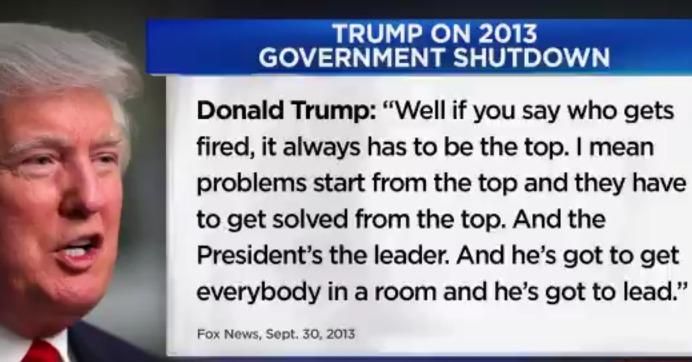Unemployment
is low, but federal employees are lining up at food banks. They aren’t alone.
 As the government shutdown drags on,
the image of federal workers lining up at food pantries has dramatized just how
many workers live financially close to the edge.
As the government shutdown drags on,
the image of federal workers lining up at food pantries has dramatized just how
many workers live financially close to the edge.
By one estimate, almost 80 percent of U.S. workers live
paycheck to paycheck. Miss one check and you’re taking a second look at what’s
in the back of the pantry cupboard.
From federal prison guards in small
towns to airline safety inspectors in major cities, the partial government
shutdown has forced 800,000 federal workers — and many contractors, too — to
survive without a paycheck.
The shutdown is a Trump-made
disaster, with an estimated 420,000 “essential workers” required to show up for
work without a paycheck. They have full-time responsibilities, which makes
finding another part-time job nearly impossible.
Another 380,000 federal workers have
been furloughed, including Coast Guard employees that are being encouraged to
take on babysitting gigs and organize garage sales. They saw their last
paycheck on December 22 and are scrambling to pay rent,
mortgages, alimony, and credit card bills, let alone the groceries.
The average federal employee isn’t wealthy, taking home a weekly paycheck of $500, according to American Federation of Government Employees, the union representing affected workers.
The vulnerability they feel isn’t
unusual. A majority of the U.S. population is living with very little by way of
a savings cushion.
One troubling indicator is the
rising ranks of “underwater nation,” households with zero or negative wealth.
These families have no savings reserves — they owe more than they own.
The percentage of U.S. households
that are “underwater” increased from
15.5 percent in 1983 to 21.2 percent
today. This experience cuts across race, but is more frequent in black and
Latino households — including over 32 percent of Latino families and 37 percent
of black families.
The next 20 percent of all U.S.
households have positive net worth, but not much. Four in ten families couldn’t come up with $400 cash if they needed it
for an emergency, according to the Federal Reserve.
Black families are especially
vulnerable to economic downturns or delayed paychecks.
Since 1983, the median wealth for a
U.S. family has gone down 3 percent, adjusting for inflation.
Over the same period, the median wealth for a black family declined a devastating 50 percent, according to Dreams Deferred, a new study I co-authored for the Institute for Policy Studies. (Meanwhile, the number of households with $10 million or more skyrocketed by 856 percent.)
Over the same period, the median wealth for a black family declined a devastating 50 percent, according to Dreams Deferred, a new study I co-authored for the Institute for Policy Studies. (Meanwhile, the number of households with $10 million or more skyrocketed by 856 percent.)
Unemployment may be low, but it
masks a precarious and insecure population. At the root of the problem is
growing inequality.
Wages for half the population have
been stagnant for over four decades, while expenses such as health care,
housing, and other basic necessities have risen. Many families still haven’t
fully recovered from the economic meltdown a decade ago.
After going up steadily since World
War II, homeownership rates have been falling since 2004. And as with income,
homeownership is also heavily skewed towards white families.
While the national homeownership rate has virtually remained unchanged between 1983 and 2016, 72 percent of white families owned their home, compared to just 44 percent of black families.
While the national homeownership rate has virtually remained unchanged between 1983 and 2016, 72 percent of white families owned their home, compared to just 44 percent of black families.
Latino homeownership increased by
nearly 40 percent over that time, but it still remains far below the rate for
whites, at just 45 percent.
If the partial government shutdown
continues for “months or years,” as President Trump threatens, there will be
even more stress and hardship on our nation’s most vulnerable families. The
bigger challenge is how to ensure our economy enables more people to save and
build wealth.
Make no mistake: parts of our
economy were on “shutdown” long before the government.
Chuck Collins directs the
Program on Inequality at the Institute for Policy Studies. Distributed by
OtherWords.org.